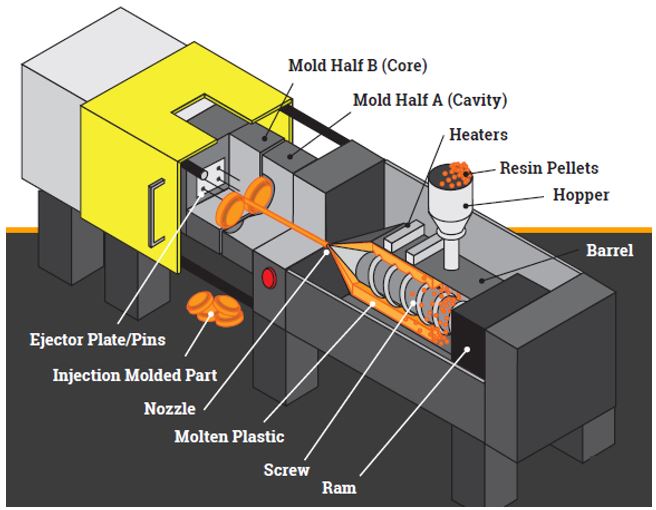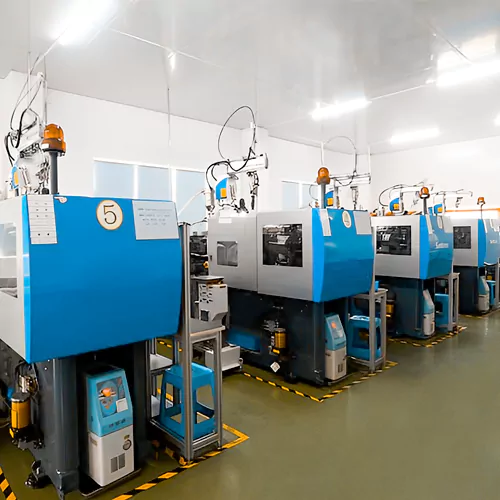Discovering the Future of Plastic Injection Molding in the Manufacturing Market
Discovering the Future of Plastic Injection Molding in the Manufacturing Market
Blog Article
The Future of Plastic Shot Molding: Technologies and trends to View
As the plastic shot molding sector evolves, a number of crucial fads are emerging that guarantee to reshape its landscape. Automation and wise production strategies are set to enhance efficiency, while the shift in the direction of lasting products mirrors an expanding ecological consciousness. Developments in 3D printing are paving the method for extraordinary design flexibility. Nevertheless, these developments likewise yield obstacles that call for mindful factor to consider. Comprehending exactly how these aspects will communicate and influence future practices is crucial for stakeholders looking to navigate this transformative duration successfully.
Automation and Smart Manufacturing
As the plastic shot molding market evolves, automation and clever production are taking center stage, revolutionizing manufacturing processes - Plastic Injection Molding. The integration of innovative innovations such as robotics, IoT (Internet of Points), and synthetic knowledge is allowing manufacturers to boost effectiveness, reduce functional costs, and enhance product high quality. Automated systems streamline operations, reducing hand-operated intervention and raising throughput, which is crucial in meeting the increasing need for rapid manufacturing cycles
Smart manufacturing modern technologies help with real-time surveillance and data evaluation, permitting business to maximize device efficiency and forecast maintenance demands. This proactive technique not just reduces downtime however also prolongs the life-span of equipment. Additionally, making use of collaborative robots, or cobots, boosts the flexibility of production lines, making it possible for workers and devices to operate side-by-side securely and successfully.
The adoption of automation in plastic shot molding is not simply a fad yet a strategic critical for businesses aiming to remain competitive in a global market. By taking advantage of these innovations, suppliers can attain higher precision, lower waste, and adjust quickly to changing client needs, placing themselves for lasting development in a progressively computerized future.
Lasting Products and Practices
The push towards automation and wise manufacturing has paved the way for a greater focus on lasting products and methods within the plastic injection molding industry. Companies are increasingly looking for green choices to standard petroleum-based plastics, causing the adoption of recycled and bio-based materials. These sustainable products not just decrease environmental impact yet likewise line up with consumer need for greener items.

In addition, partnership in between manufacturers, material suppliers, and environmental organizations is fostering development in the advancement of sustainable materials that satisfy performance requirements without jeopardizing high quality. As guidelines around plastic usage end up being stricter, the industry is poised to adapt by embracing these lasting strategies, making certain lasting stability and lowering dependence on non-renewable sources. The combination of sustainability into plastic injection molding is not merely a fad; it is coming to be a necessary part of business obligation and operational quality.
Developments in 3D Printing
Current developments in 3D printing technology are significantly changing the landscape of plastic shot molding. The combination of additive manufacturing procedures enables for the rapid prototyping of intricate geometries that were difficult or once challenging to attain with traditional approaches - Plastic Injection Molding. This capacity not only increases product development cycles however also minimizes material waste, straightening with the growing need for sustainable production techniques
Additionally, the emergence of crossbreed production strategies, which incorporate 3D printing and injection molding, supplies makers the ability to develop intricate designs while preserving the efficiency of mass production. This approach allows the production of personalized components tailored to particular customer needs without compromising the rate and scalability that shot molding provides.
Furthermore, advancements in products, such as high-performance polymers and composites especially developed for 3D printing, are boosting the practical capacities of published components. These products can stand up to go right here greater tension and show boosted thermal residential properties, making them suitable for more demanding applications.
As 3D printing remains to develop, its integration into plastic injection molding procedures guarantees to enhance productivity, reduce costs, and foster advancement in product style, placing suppliers to better fulfill the challenges of an open market.
Information Analytics and IoT Assimilation
Information analytics and the integration of the Internet of Things (IoT) are reinventing plastic injection molding by supplying suppliers with extraordinary insights right into their operations. By leveraging real-time data gathered from interconnected devices and sensors, producers can check efficiency metrics, identify ineffectiveness, and maximize production procedures. This data-driven strategy helps with predictive maintenance, minimizing downtime and expanding equipment lifespan.
Additionally, IoT integration allows for enhanced quality assurance. By continually tracking variables such as cycle, stress, and temperature times, makers can swiftly spot discrepancies from established parameters and make modifications in genuine time. This not just enhances item uniformity but also reduces waste and scrap prices.
The fusion of data analytics and IoT technologies additionally empowers makers to adopt more active manufacturing strategies. With accessibility to extensive information analytics, companies can respond to market demands with better flexibility, readjusting production timetables and configurations as needed. This versatility is important in a swiftly changing manufacturing landscape.

Modification and Style Adaptability
Just how more can personalization and style adaptability enhance the competition of plastic injection molding? In a progressively varied market, the ability to supply customized solutions is vital. Customization enables makers to satisfy details customer requirements, fitting special dimensions, forms, and performances that conventional products might not accomplish. This flexibility not only promotes customer loyalty but likewise opens opportunities for new company opportunities throughout different industries, from automotive to consumer goods.
Developments in style innovations, such as computer-aided layout (CAD) and fast prototyping, additional boost this pattern. These tools allow pop over to this site developers to produce detailed patterns and intricate geometries, which can be flawlessly incorporated into the production procedure. As a result, producers can react swiftly to transforming customer preferences and market needs.
Additionally, the execution of modular tooling systems enhances design flexibility, enabling quicker adjustments in between various item styles without extensive downtime. This flexibility can lead to reduced preparations and reduced production prices, making companies a lot more agile and affordable. Ultimately, embracing modification and style adaptability in plastic shot molding not only raises product offerings but also reinforces market positioning in an ever-evolving landscape.
Final Thought
The future of plastic shot molding is defined by substantial improvements in automation, sustainable practices, and cutting-edge products. The assimilation of IoT and information analytics will enhance functional efficiency and predictive maintenance. The adoption of recycled and bio-based products, together with progress in 3D printing, will foster sustainability within the industry. Personalization through modular tooling and quick prototyping will allow manufacturers to continue to be affordable and receptive to the dynamic demands of the marketplace.

The future of plastic shot molding is identified by substantial advancements in automation, sustainable methods, and cutting-edge materials.
Report this page